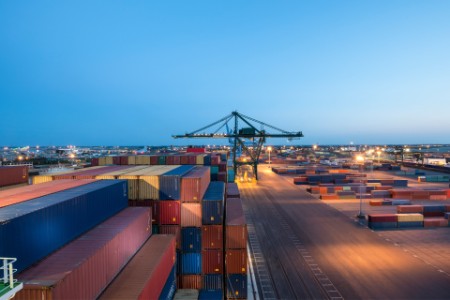
Chapter 1
Why diversifying operating models benefit businesses
Tax reforms, including a call for a global minimum tax, have many businesses re-examining whether a multi-hub model is better for them.
Even before the G20’s minimum tax announcement in July 2021, organizations were starting to explore benefits of more agile multi-hub business models. The benefits of a multi-hub approach include the ability to solve skills shortages by tapping into new, broader and deeper talent pools. The approach also improves customization of goods and services for specific markets and proximity to customers.
The loose definition of a multi-hub model is one in which a single-entrepreneur structure is replaced with a multi-hub alternative, with high value, entrepreneurial business functions located in multiple countries.
If an organization is intangibles-rich, for example, and it would like to move from a centralized to a multi-hub model, this often involves moving from single ownership of those intangibles to shared ownership using a cost-sharing agreement across the different countries where hubs are located. In these types of models, global transfer pricing rules sometimes lead to use of profit split methodologies in these cost-sharing scenarios.
Such models are less common than traditional single hub models and carry execution complexity that can be addressed by way of bilateral or multilateral advance pricing agreements between the key countries where the business has hub activity.
By adopting a fully distributed tax operating model and spreading income in a more decentralized manner, an organization may be better able to mitigate tax risk and controversy.

Chapter 2
How lacking substance can have real financial costs
A multi-hub approach is not right for all. It’s important to understand the additional complexities of having one.
To be sure, a multi-hub approach is not the right solution for all businesses. Organizations must carefully calculate all of the implications of a multi-hub model before they decide to make the switch.
There are no predetermined rules about what a multi-hub model should look like, how many hubs it should have, what functions should be dispersed or where they should be based. Again, this is a choice for businesses to make based upon their specific needs. For example, a company in a particular industry sector, say ecommerce, may access a talent pool in multiple European and certain Asian countries, and choose to establish hubs in each of these clustered around these key employee teams.
One of the effects of BEPS is that organizations often now need to deploy a more significant amount of functions (people), assets and risks in a hub country to meet economic substance requirements. This puts strain on single-hub models as they may struggle to find talent to manage and control key business processes and risks in the hub location. Multi-hub models, however, enable organizations to target more and/or larger talent-rich jurisdictions.

Chapter 3
The fragility of lean supply chains exposed
One major benefit of a multi-hub model is creating a more resilient and agile supply chain.
The need to increase supply chain resilience by nearshoring or onshoring is another key reason for adopting a multi-hub approach. The pandemic has dramatically underlined the fragility of extended just-in-time supply chains.
Other factors driving nearshoring include government regulation and incentives, national security concerns and moves to increase environmental sustainability. These drivers may not be directly related to tax, but onshoring and nearshoring is likely to decentralize business practices and give rise to controversy if tax consequences do not follow in lockstep.
As a result of BEPS and the proposed global minimum tax rate, it now makes even more sense to factor in other priorities and give due prominence to aspects such as local infrastructure, warehousing, and sustainability concerns that could be addressed with greater proximity to customers and suppliers. All of these other factors for choosing location become increasingly important. In the wake of the COVID-19 pandemic, many companies are prioritizing talent access, flexibility of workforce location, increased agility and control over risks.
Consider the hypothetical example of a North American company that decides to diversify its supply chain to increase resilience. It may choose to nearshore its manufacturing for the US market by moving operations from China or another Asian location to Mexico. In doing so, it may make business sense to relocate a cadre of Singapore-based executive leaders responsible for sales planning, marketing, R&D and manufacture to the US at the same time. The Internal Revenue Service (IRS) could then support the taxpayer in relation to tax dispute resolution due to the relevant substance within its borders.
Alternatively, the company may choose to add another hub location to its operating model by locating those leaders in Panama, for reasons of communication, transportation, logistics and the ability to trade using the US dollar. This example shows how the movement to nearshore, which is primarily about increasing resilience, can drive multi-hub models and a corresponding need to ensure that the future tax models are consistent with these distributed operating models.

Chapter 4
Why government intervention increases demand for LATTEs
Trade policies and a growing commitment to sustainability also affects the consideration of a multi-hub model.
The relatively recent increase in governments regulating free-market principles is another factor driving the need to diversify both supply chains and operating models. For example, in instances where public policy has forbidden the export of sensitive technologies, or foreign firms have been barred from acquiring domestic companies, organizations have needed to diversify their supply chains and modify operating models to remain competitive. This has also reinforced a shift toward multi-hub models.
Notable recent examples include Beijing’s Made in China 2025 industrial strategy, the Biden Administration’s executive orders on US supply chains, and the UK’s changing trading relationships with the EU post-Brexit.
The demand for local, authentic, traceable, transparent and ethical consumer products (LATTE), is another powerful driver in the move to a multi-hub business model. In many ways, LATTE goods are the antithesis of those conventionally developed and distributed through traditional centralized principal company models.
In order to compete in this space, big corporations require senior personnel in the right markets to track local trends, document local consumer preferences, design and customize appropriate products and validate the provenance of ingredients used in the production process.
Weighing the pros and cons of a multi-hub approach
Until recently, one of the biggest barriers to the adoption of a multi-hub model was the fear of incurring a significantly higher effective tax rate. As a result of BEPS, the proposed narrowing of tax rate differentials and a proliferation of incentives in larger countries targeting income from intangibles, the relative tax cost difference has been reduced and sometimes eliminated or reversed.
Other reasons for not engaging with the idea of decentralization include corporate inertia — the centralized model has served businesses well for a long time, making it familiar and comfortable for many executives, as well as tax and trade professionals. Certain jurisdictions have geared their tax approach towards attracting businesses using a centralized model and have developed a high level of trust and perceived stability. The change introduced by BEPS is indirect and is being felt incrementally over time. The outcomes of the BEPS project have not manifested as a reduction in the reliability and stability of the lower tax rate countries but rather by way of a proliferation of “counter incentives” eroding the benefits of using them.
The tax incentives in other jurisdictions which may support a hub structure might seem complex in comparison. There are also concerns that the administration of a distributed hub model may be more complex compared to the status quo although multi country advance pricing agreements can eliminate that complexity. Complex administration can be countered by preparing the relevant documentation substanting the multi-hub structure or by entering into multi-country advance pricing agreements which would further eliminate that complexity.
The answer to all of these concerns is to conduct a thorough cost-benefit analysis of all business processes, calculating differentials in complexity and cost, and then weigh these against the benefits, both tangible and intangible, of transitioning to a multi-hub model.
The multi-hub business model may not be for every organization, but there are almost certainly many more companies in operation today which could benefit from exploring and adopting a more agile multi-hub approach.
Summary
Multi-hub models helps enable organizations to enjoy a variety of benefits, including the ability to diversify supply and value chains, get closer to customers, and tap into rich new employee recruitment markets. And with the move towards a global minimum tax rate, decentralized models also make sense for tax teams as well.


